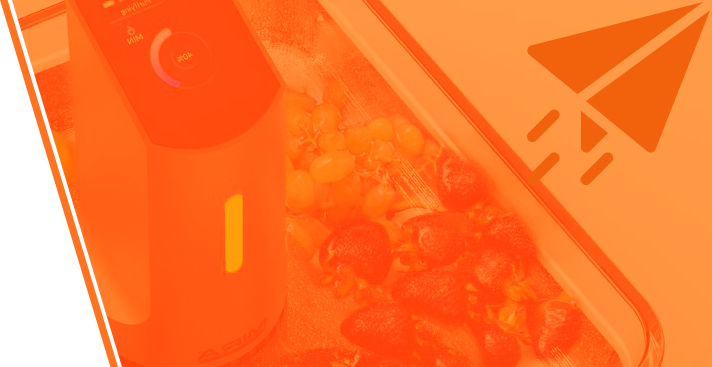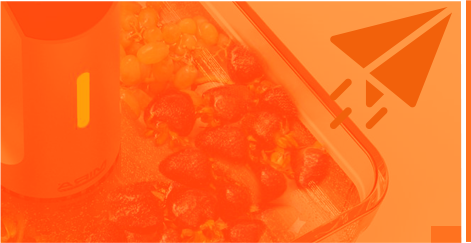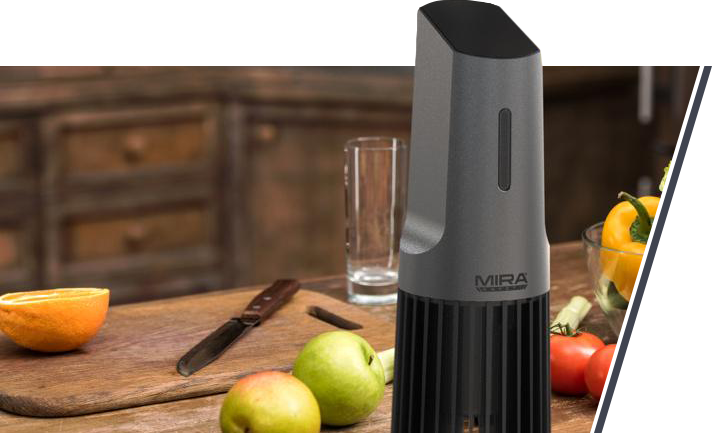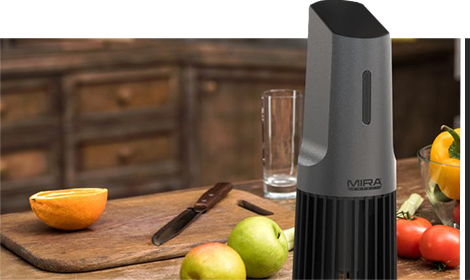Do you wash Meat before cooking?
Is it something you should be doing … or just a cultural thing?
“I felt sick the first time I ate unwashed chicken,” author Carolyn Desalu admitted in a recent editorial on Food52.
Her Caribbean culture had long mandated meat washing —often with vinegar- or citrus-based solution—so it seemed unnatural for her to see a friend take chicken breast straight from the package and toss it into the pan. Even though she’d never seen a chef dutifully washing duck breasts in the back of a five-star restaurant, it felt unnatural not to keep up the tradition while cooking at home.
But there’s a practical reason for this kind of tradition, too. Desalu’s family once lived off meat purchased at open-air markets, where buzzing mosquitos and bare-handed vendors seemed an excellent reason to wash your meat at home. That’s in stark contrast to the professional chef, who can source his meats from the best possible farms.

(Image courtesy of National Geographic)
Whether washing your meat with these traditional methods has any effect … remains to be seen.
Benjamin Chapman, a Food Safety professor from North Carolina State University, points out that pathogens transferred to the cleaning liquid can be much easier to spread. Moreover, “we don’t have good data that proves vinegar kills what’s in your sink,” He explains that bleach-based solutions are the “safest for cleaning.”
Fortunately, there’s a new alternative with the DTX-1 Food Detoxifier.
Today, we will dive deep into how you can wash meat with your DTX-1. We’ll cover the steps and everything you need to know to safely and efficiently enjoy your favorite meals worry-free.
Let’s get started …
TABLE OF CONTENTS
-
01
Back to the Slaughterhouse “Jungle”
-
02
Traditional Steps Taken to Meat Washing
-
03
How to Wash Chicken and Steak with the DTX-1
-
04
What Makes the DTX-1 Different
-
05
What About Ground Meat?
-
06
3 Simple Steps to Clean Meat
Back to the Slaughterhouse “Jungle”
In 1906, Upton Sinclair’s novel “The Jungle” was first published, sending shockwaves through the American meat industry.
It painted a grim picture of the country’s slaughterhouses and the underpaid workers who work there—from child labor and underpaid immigrant workers to lax enforcement of existing regulations. As a result, it forced an entire generation of Americans to take a long hard look at the food they eat and how it’s prepared.
The massive cultural impact of The Jungle can’t be overstated, and it’s still taught in high schools. Vegans and vegetarians frequently cite it as a reason for downsizing or eliminating their meat intake.
Have you ever heard of White Castle hamburgers? Their entire business model was conceived in response to the book’s popularity. That’s why they serve ultra-thin hamburgers, cooked in sight of the customer … so you know what you’re getting.

(Image courtesy of Flickr)
That’s how much interest the book channeled.
And for decades afterward, it was enough to keep the meat industry generally honest.
Even as production soared and the usage of hormones and other drugs became commonplace, Americans enjoyed a relatively clean choice of meats at the average supermarket.
But it seems like things have started to slip in recent years …
In February of this year, the US Department of Labor revealed that a slaughterhouse cleaning firm had been using underaged children across eight states. Numerous other slaughterhouses are accused of child labor violations, and meat safety violations are rising.
It’s gotten so bad that the White House is laying out a new plan to strengthen our meat and poultry supply chain.
As their plan states, “four large meat-packing companies control 85% of the beef market. The top four processing firms in poultry control 54% of the market.”
When these massive meat-processing facilities are kept up to code, they’re safe—at least theoretically.
But when code violations pile up … when everyday workers are forced to work long hours of overtime and more rules are bent if not outright broken—then the concept of “safety” becomes less and less of a concern.
And while these mounting threats increase, what’s the government’s response?
They cut 40 percent of food safety inspectors from slaughterhouses in the pork industry, taking a “giant step backward to the days of Upton Sinclair’s The Jungle,” according to Debbie Berkowitz, the director of health and safety at the National Employment Law Project.
She continued:
“The USDA’s new rule, published today, will not make our food safer but will lead to an increase in severe and often debilitating injuries to tens of thousands of slaughterhouse workers, who already endure exceedingly harsh conditions to provide cheap pork to American consumers.”
Berkowitz indicted new policies for optimizing production speed over customer safety.
And this all happened in 2019 … years before grocery prices started rising due to inflation.
Now, due to the increasing pressure on slaughterhouses and meat processors—along with higher prices paid by consumers and less regulation enforced by the government—there’s a genuine risk of increasing contamination and food safety violations in the meat industry.
Americans should consider taking extra steps to ensure their food is safe.
Traditional Steps Taken to Meat Washing
For households meat washing while cooking, the process is practically second nature …
Some families will remove the meat from the package, then thoroughly wash each piece of meat with the faucet by hand. That might mean scrubbing the surface of a chicken breast with your fingertips or pulling open a chicken thigh to ensure the fresh water reaches every little nook and cranny.

(Image courtesy of Flickr)
Other families prefer to soak their meats in water and vinegar, water and citrus (lemon or lime), or both. Depending on the family tradition, you might soak your meat for a few minutes or up to an hour before cooking. Either way, it doesn’t necessarily hurt the meat. If anything, it can work like brine to lightly marinate your meat.
The only problem with meat washing comes when you reach the cleaning phase. Specifically, how do you eliminate all that pathogen-filled liquid after soaking your meat? This is why the FDA does NOT recommend washing your own meat, simply because of the cleanup process that comes afterward.
But as I’ll show you in a moment, this process can be simplified by just doing it in the sink. And the DTX-1 can potentially take your daily meat cleaning regimen to a whole new level …
How to Wash Chicken and Steak with the DTX-1
Start by ensuring your DTX-1 Detoxifier is fully recharged. Then fill a large mixing bowl or kitchen-safe container with room temperature or cool water. You can include vinegar, lemon juice, or both in the water if you choose to. It won’t prevent the DTX-1 from doing its job (but it won’t be long before it’s finished).
Remove your meats from the refrigerator, and prep them for cooking. Trim any fat, slice up a chicken breast for fajitas/stir fry, and do anything else you’d do before marinating/cooking. The only other consideration at this stage is to ensure your meats are cut small enough to fit in the cleaning vessel.
We recommend doing this in a sink if yours is large enough. That makes a spill extremely unlikely and makes safe cleanup far more accessible than anywhere else. Additionally, due to the nature of the DTX-1’s ultrasonic/rapid oxidation cleaning method, it’s “the smaller, the better” when it comes to filets and dense meats.
Once everything is ready, submerge it into the water/cleaning solution, leaving enough room for the lower fin assembly of the Detoxifier. Then insert the DTX-1, use the touchscreen to select the correct cleaning mode, and get it started.
Detoxifying your meat will only take a few minutes, and it’s an automatic process that can be going on while you’re dicing onions or mashing potatoes. It won’t change the flavor or texture of your food, either.
The single most crucial part of the process is the cleaning process.
First, you’ll need to remove your meat to a drying rack. You can rinse them again on the way out if you like. Just be mindful of the wastewater.
Second, you’ll need to dispose of the cleaning solution carefully. You’re going to end up with a large volume of water that’s loaded with pathogens. That’s precisely what worries the FDA about meat washing and why we recommend completing this whole process in the sink if you choose to do so.
And finally, you’ll need to submerge the fins of the DTX-1 in a sanitizing bath. You can use a separate bucket with a sanitizing solution that meets CDC guidelines stated here. This additional step helps to reduce the risk of cross-contamination.
So it’s ultimately just three key steps … you prep, detoxify, and clean up.
The DTX-1 takes care of the rest …
What Makes the DTX-1 Different
We’ve already covered the basic functionality of the DTX-1 Detoxifier in previous blogs, but we’ll recap here in the context of using it to cleanse raw meat …
First, there’s the ultrasonic cleaning action. Blasting the cleaning solution and producing cavitation on the surface of your meat. That means agitating the cleaning solution to create microscopic bubbles that can remove the smallest contaminants that would otherwise go into the pan or onto the grill with your food.
This is the same ultrasonic cleaning used to make eyeglasses, car keys, and other everyday items look good as new. It’s the ultimate solution for reaching those tiny areas you’d otherwise never get by hand. Whether you’re cleaning food, plastics, ceramics, or even glass, it can easily wipe out dirt and grime.
Next comes the active oxidation, which makes the DTX-1 Detoxifier a unique solution.
Oxidation is a crucial step used by some water purifiers, and it’s even used by some industrial-grade cleaning equipment to get the job done.
With oxidation, the DTX-1 ejects a stream of active oxygen molecules into the cleaning vessel. These molecules can penetrate the items you’re cleaning, killing bacteria, viruses—even mold and protozoa on contact. Oxidation can even clean the odor-producing bacteria trapped in your stinky clothes and shoes.
With each proven through years of dedicated use—the combined application of ultrasonic cleaning with rapid oxidation is something you’ll only get from the DTX-1 Detoxifier.
What About Ground Meat?
Yes, you can use the DTX-1 for ground meat. However, we recommend sticking to whole meat cuts for a few different reasons unrelated to the function of the Detoxifier.
First of all, it’s impossible to know precisely which cuts of the animal went into your ground beef—unless you really trust your butcher. One Washington Post article claims that a single hamburger patty could contain Meat from over 100 cows!
That’s a nightmare for bacterial cross-contamination. And as a result, you can’t be sure a hamburger is safe unless it’s cooked through—even though that would be blasphemy at most American cookouts.
I’m not saying you shouldn’t enjoy hamburgers, but it’s an ever-present risk you must consider.
Finding a butcher you can trust is less of a concern. And there’s always the alternative of making your own ground beef at home, with cuts you know to be safe, which often yields tastier, safer results.
Otherwise, steak sandwiches and chicken fajitas make great alternatives to your favorite hamburger-based dishes. And they’re just as easy to cook with.
3 Simple Steps to Clean Meat
This article is not meant to alarm you.
We realize how hard it can be to keep fresh food on the table for the ones you love.
If anyone, the DTX-1 Detoxifier is designed to simplify eating great meals at home. Make them simple. Because with the DTX-1, it takes just THREE easy steps to make sure your food is clean:
1.Prep: Remove your meat from the package, then clean and cut it. Fill a serving bowl or kitchen vessel with cool water, and make sure your DTX-1 Detoxifier is fully charged.
2.Detoxify: Submerge your chosen cuts of meat, select the correct cleaning setting, then let the DTX-1 do the rest of the work.
3.Clean up: Carefully dispose of the cleaning solution/water, sanitize the DTX-1 Detoxifier, and remove your detoxified meat to a separate plate or drying rack.
That’s it.
And almost all of the work is done automatically while you’re keeping up with the rest of your chores in the kitchen.
It’s a simple, painless process that—when done correctly—can only help your family eat healthier and safer than they have before.
So upgrade your kitchen TODAY with a DTX-1.
Scroll down for more …





